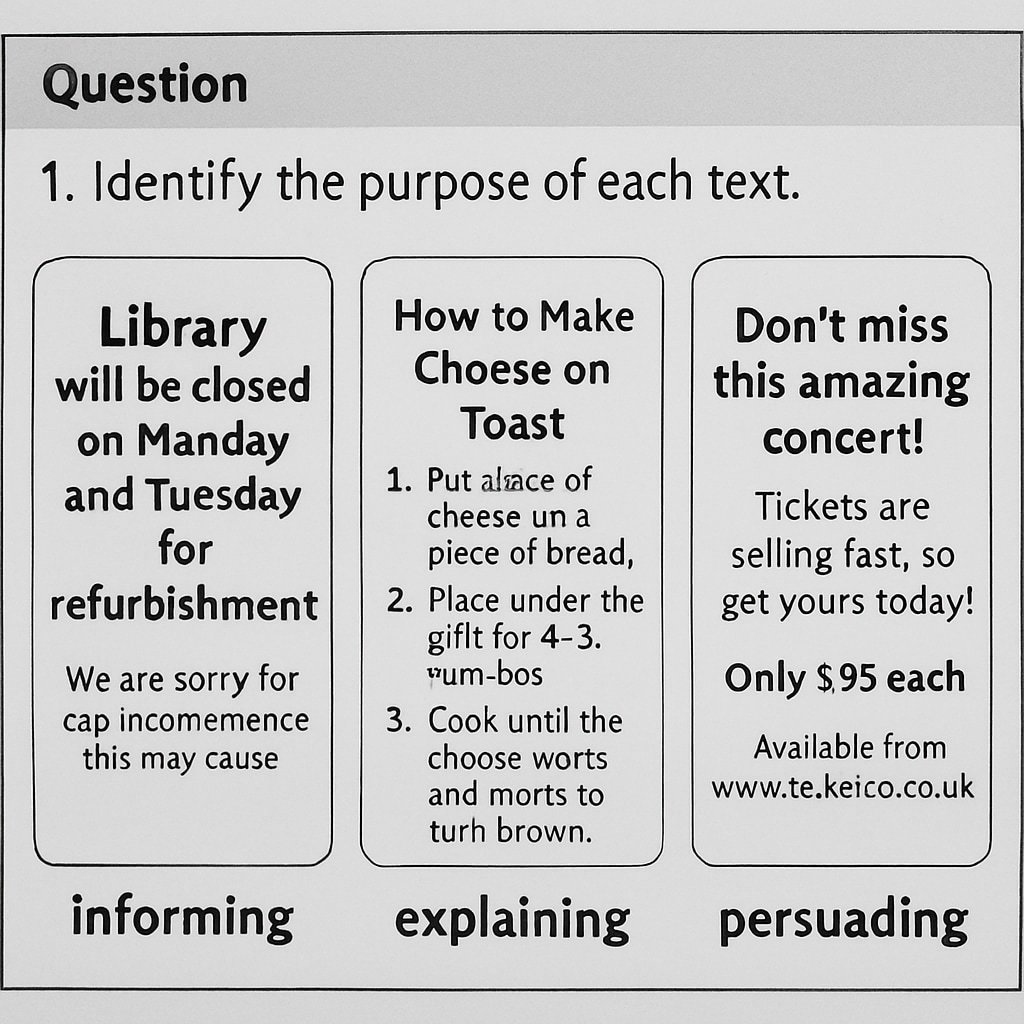Functional Skills English reading exams often challenge learners with tasks that involve identifying a text’s purpose. Whether the goal is to inform, explain, or persuade, understanding these distinctions is critical for exam success. This article provides an in-depth guide to help you confidently determine text purposes, improve your reading comprehension, and excel in your exams.

Understanding Common Text Purposes
Texts in Functional Skills English exams generally fall into three main categories: informing, explaining, and persuading. Each has unique characteristics that can help you identify its purpose:
- Informing: These texts focus on delivering factual information. They often include statistics, straightforward language, and neutral tone. Examples include news articles and instructional guides.
- Explaining: Explanation texts aim to provide clarity or describe how something works. They often use step-by-step details, illustrations, or comparisons. Examples include manuals, FAQs, and process descriptions.
- Persuading: Persuasive texts seek to influence the reader’s opinion or encourage action. They often include emotive language, rhetorical questions, and strong arguments. Examples include advertisements, opinion pieces, and campaign materials.
Recognizing these traits is the first step toward mastering text purpose identification.
Strategies for Identifying Text Purpose
To accurately identify a text’s purpose, follow these key strategies:
- Analyze the Language: Pay attention to the tone and style. Is the text neutral and factual, descriptive and detailed, or emotional and opinion-driven?
- Look for Structural Clues: Examine headings, subheadings, and formatting. Informative texts often use bullet points; explanatory texts may include diagrams, while persuasive texts frequently have bold statements or slogans.
- Identify the Intended Audience: Consider who the text is aimed at. For example, an instructional guide targets learners, while an advertisement focuses on potential customers.
- Spot Key Phrases: Words like “you should,” “this proves,” or “step-by-step” provide strong hints about the text’s purpose.

Improving Exam Performance
Once you’ve mastered text purpose identification, you can apply this knowledge to enhance your performance in Functional Skills English reading exams. Here are some tips:
- Practice Regularly: Use past exam papers or sample texts to hone your skills. Focus on understanding the purpose behind each text.
- Time Management: Allocate adequate time to read and analyze each text carefully. Avoid rushing, as misinterpretation can lead to errors.
- Seek Feedback: Discuss your answers with teachers or peers to confirm your understanding of text purposes.
- Use Contextual Clues: Pay attention to the surrounding questions, as they often provide hints about the text’s purpose.
With consistent practice and a strategic approach, you can confidently tackle text purpose-related questions in your exams.
Conclusion
Mastering the skill of identifying text purposes is essential for success in Functional Skills English reading exams. By understanding the characteristics of informing, explaining, and persuading texts, analyzing structural and linguistic clues, and practicing with varied examples, learners can sharpen their comprehension abilities and perform better under exam conditions. Start applying these strategies today to boost your confidence and achieve your goals!
External Resources: For more insights, check out Reading comprehension on Wikipedia or explore Reading tips on Britannica.


